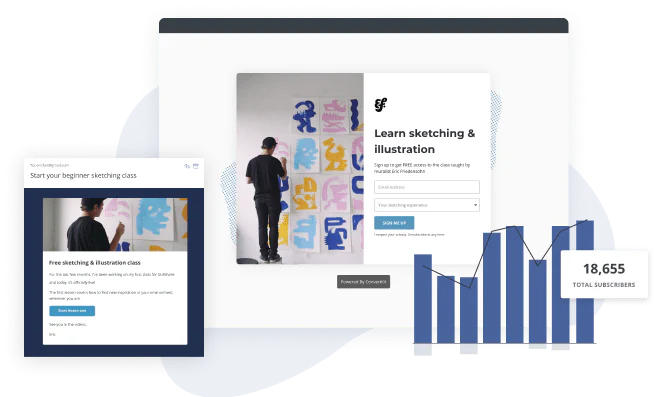Sometimes as entrepreneurs and creators, we’re much closer to our goals than we think.
We’re told to grow, grow, grow, but too often in my experience time spent pursuing growth is time missed elsewhere.
Here’s the thing: instead of spending so much time focusing on growing your newsletter list, you can build a six-figure business from the list you already have.
For more than a decade I wrote online but failed to grow an audience or make any meaningful amount of money as a creator. It frustrated me how so many others made it look so easy! There was Nathan Barry selling hundreds of thousands of dollars with ebooks. Daniel Vassallo selling thousands of his “Everyone Can Build A X/Twitter Audience” course. And Steph Smith creating tons of revenue and new opportunities from her book, Doing Content Right.
I believed the only way it was possible to become successful as a content creator was to have a huge audience—10,000, 50,000, or 100,000 followers huge. For years, I let that limiting belief prevent me from making the progress I was truly capable of.
But then, after years of struggling, I had my eyes opened and realized the key was to do the exact opposite of what I had always done.
A few years ago, I read the book So Good They Can’t Ignore You by Cal Newport. In it, Newport talks about the Craftsman Mindset—an outcome-focused approach to doing creative work.
It flipped a switch for me, illuminating a path ahead for me and my business. By the end of the book, I realized what I had full control over. By placing my focus there, the success I was working so hard for would come.
How to build a 6-figure business from the email list you already have
Today, I’ll walk you through the exact steps I took to build a six-figure business, with an audience of less than 2,000 people, and Kit at the center of everything.
Start with your ultimate goal
This “craftsman” approach means starting with the outcome and then reverse engineering a path to get there.
My goal was to generate $10,000 per month in revenue as a content creator.
As a film producer, I’d reached that goal years ago—mainly by securing work on two to three feature films a year alongside a few smaller supporting commercial projects.
But, here’s the thing. Film production is a crap-ton of fun, but it’s very time-consuming. We’re talking eight-week bursts of 60- to 80-hour weeks. Long hours, long days, long periods of time away from family. For me, it wasn’t an ideal work:life balance. And it didn’t lend me much time to focus on growing other areas of my business. I knew I had something to say (and sell) beyond my skills in film.
Luckily for me I had started an online course business right at the beginning of the pandemic that showed a lot of potential. To reach my goal of $10,000 per month in revenue, I realized I would have to offer 40 courses a month at an average order value of $250 and a conversion rate of 2.5%. I had the courses and the right price point, so all I needed then was to get 1,600 people per month to the website. I’d determined that, on average, each visitor was worth roughly $5 to $6.
Here’s May 2022 as an example:
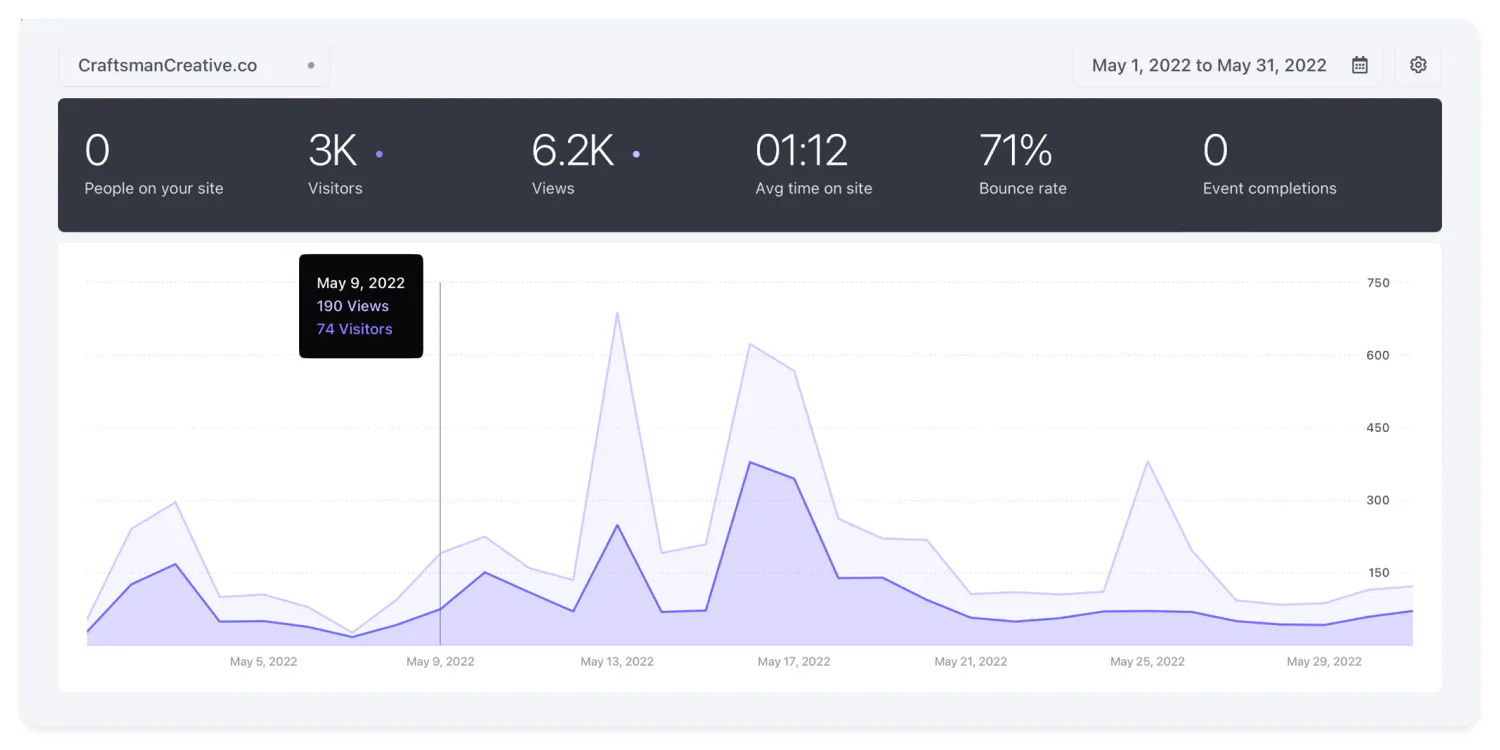
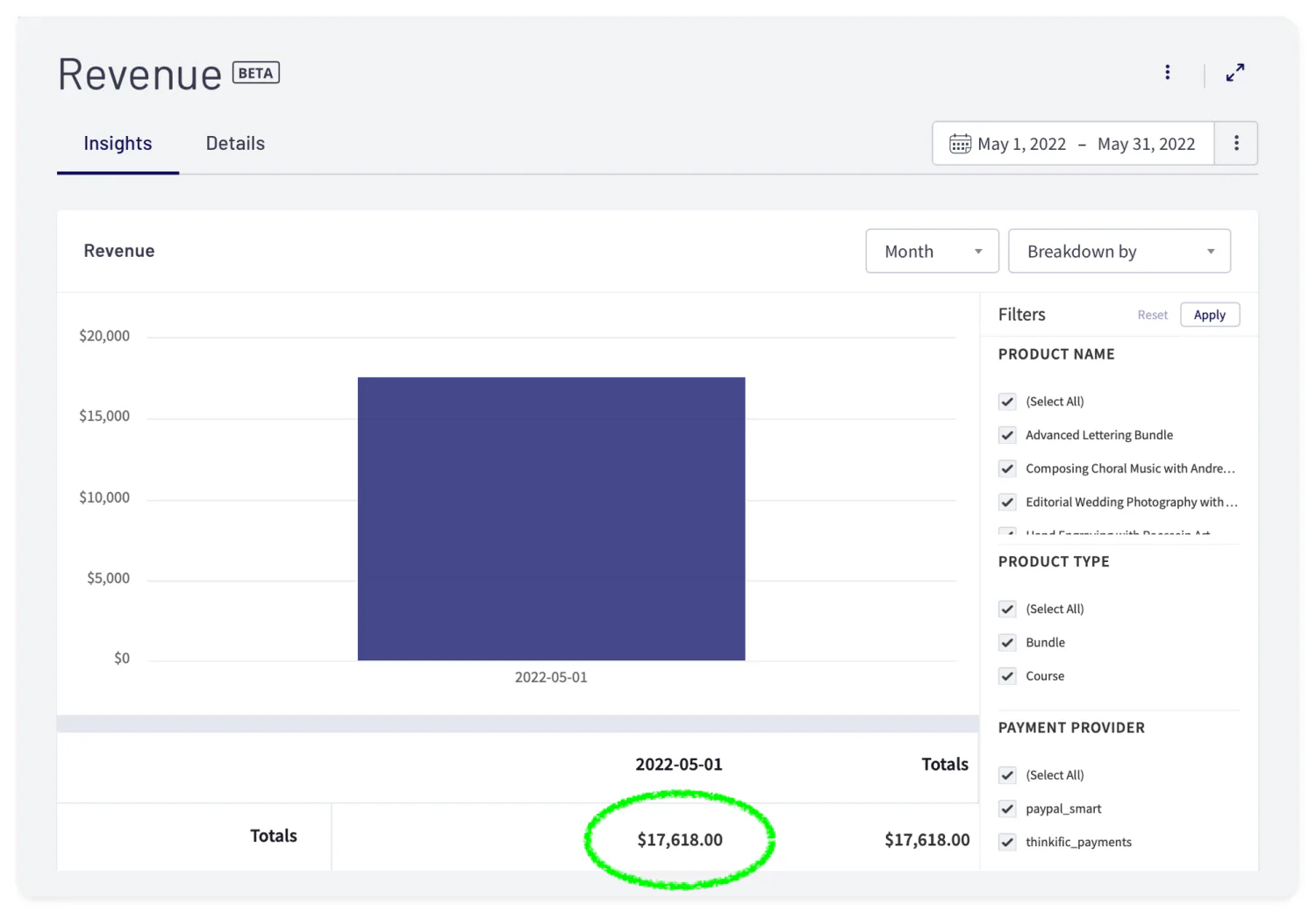
3,000 views = $17,618 ($5.86 per visitor!)
Like the film business, the course business is also a ton of fun. I get to seek out talented people and help them share their skills with the world. How cool is that? But it also presented challenges. For instance, I split the revenue 50/50 with my course partners, and scaling requires a team to help with film production, editing, website maintenance, and marketing.
I wanted to build something that would afford me the kind of life I wanted. A life lived on my terms, with enough financial freedom, location independence, and control over my time to leave me empowered, profitable, and satisfied. So I chose to become a creative entrepreneur.
With that ultimate outcome – $10,000 per month as an independent creator – as the goal, I got to work.
Use the customer journey to your advantage
Knowing what I knew about building six-figure businesses, I started with a framework that has served me well, and I believe will serve you well also: the customer journey.
I focused on developing a deep understanding of a chosen audience, their needs, and the path they’d take to become a customer.
The customer journey is a three-stage process that looks like this:
Awareness > Engagement > Conversion
As you can see from the earlier examples of flourishing content creators, having a system that works leads to more awareness, which leads to more conversion (sales and revenue).
Build a system that uses tension to pull people in
I have to give credit where credit is due. I didn’t come up with this system alone, and I owe a ton of what I’ve built to what I’ve learned from mentors like Andre Chaperon and Shawn Twing, Tony Robbins, and Derek Sivers, as well as my business coach.
As I mentioned, my system incorporates awareness, engagement, and conversion. Here’s what it looks like:
1. Awareness
I have a few ways for people to discover me and my writing. For social media, I’ve chosen to focus solely on X/Twitter until I hit 10,000 followers, an audience size that makes the lower-priced products (like my book) work at scale.
I worked with a coach who taught me the power of a network, the importance of treating X/Twitter like a job, and how threads are the key to growth.
Start by dialing in your bio to attract your ideal client and create tension that pulls them off the platform and onto your site.
Then get discovered by replying to larger accounts versus tweeting on your own in a 10:1 ratio. That means you want to reply to 10 or more accounts per day (and the people that reply to those accounts!) and tweet just one to two high-value tweets of your own per day.
Next, focus on threads two to three times per week. Workshop them, share them with people who share your same ideal audience, and edit them to be as good as they can be before you send them out. Then get people to retweet those threads once you share them so they get more reach.
When managed well, you can use those threads to create a similar tension that pulls people from the thread to your site or email list to learn more about you, what you do, and what you offer.
I started my journey by writing a book in public. I needed something to move the needle, and I began conceptualizing a “vehicle” that would help me get more awareness than I’d been able to get in the past with my writing.

The best part? It required very little extra work beyond the regular blogging I had been doing for a decade. I just reframed the writing! Instead of writing new “posts,” I would write new “chapters,” moving steadily toward a cohesive and whole narrative—my book.
The process of writing in public gave me the awareness I needed to start this business. It also held me accountable to my creative vision, which I believed deeply in. That awareness brought people to my website every day for over three months, and at the top of each page there was an email capture form to get future chapters by email.
The result was that I doubled the segment of my email list (400 to 800) and my X/Twitter following (850 to 1,700).
Awareness, check!
2. Engagement
Connect with people every day (10+) on X/Twitter by following new people and using DMs to start conversations.
Shoot your shot with some larger accounts. Make friends. Support people.
Invite them to your website to learn more about what you’re working on. When it comes to your site, the people that you’re creating for should quickly see and feel the pull of that tension. You have something they want, and it’s behind the door that you’ve just invited them to enter. Hey, this is for me, is the first reaction you’re hoping to inspire.
Make it easy for them to engage with you and find a way to get their email address with a lead magnet. Offer a free email series. A newsletter. A free guide to help them achieve something they want.
Here’s what my welcome sequence looks like:
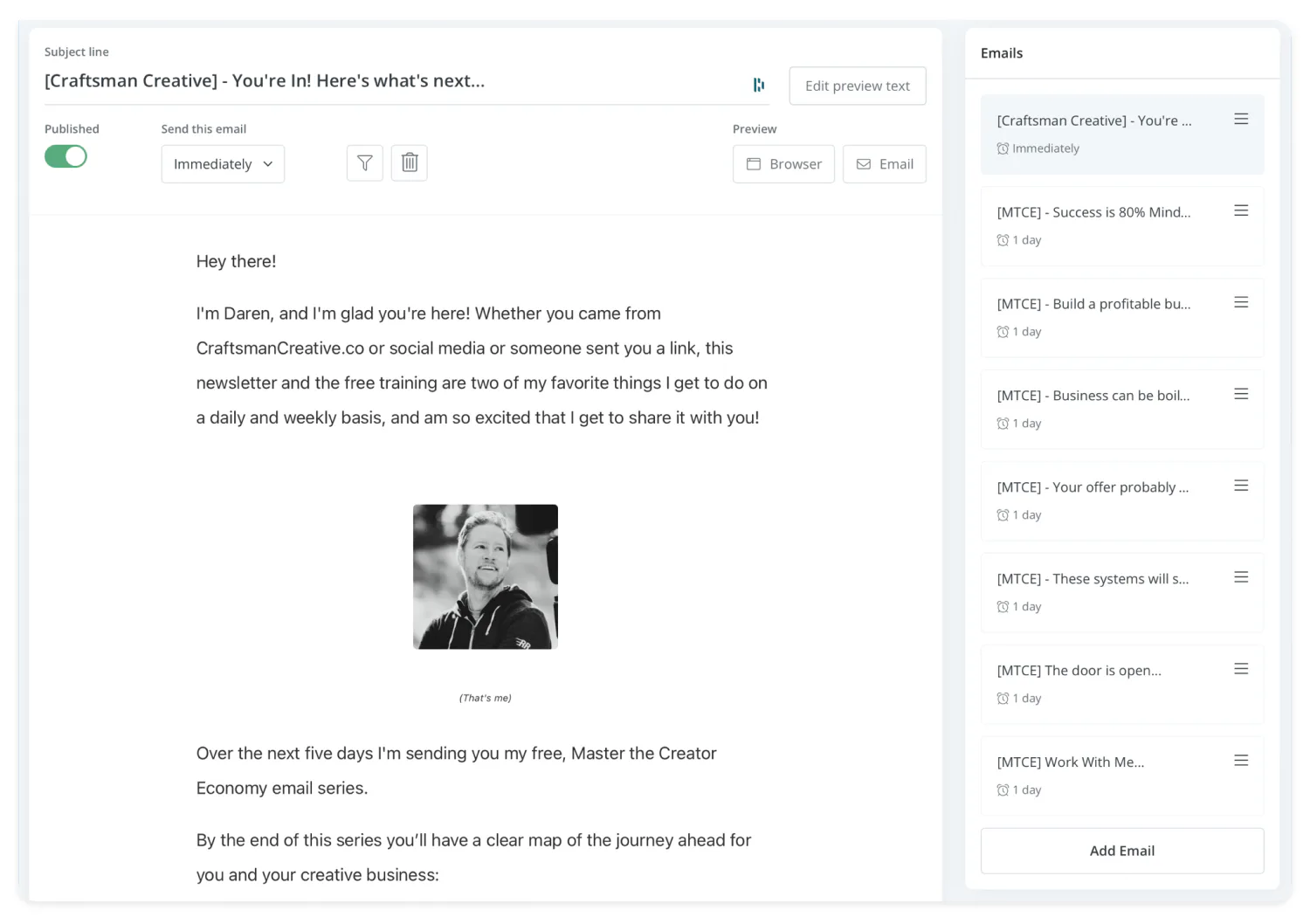
Lastly, focus on value above all else. If you settle on offering a week-long email series, my challenge to you is to deliver more value than anyone else through a week-long email series.
No selling. I repeat: no selling.
I don’t even talk about my products until the very last email in the series, and they have to click a link to signal to me that they want to learn more! This is very different from the “sales funnel” approach that hits your reader over the head with offers day after day until they buy or unsubscribe.
By focusing on value alone, you create tension that will need to be resolved later (the solution you’ll offer them later). You’ll also see much higher engagement. My welcome series has a 71% average open rate!
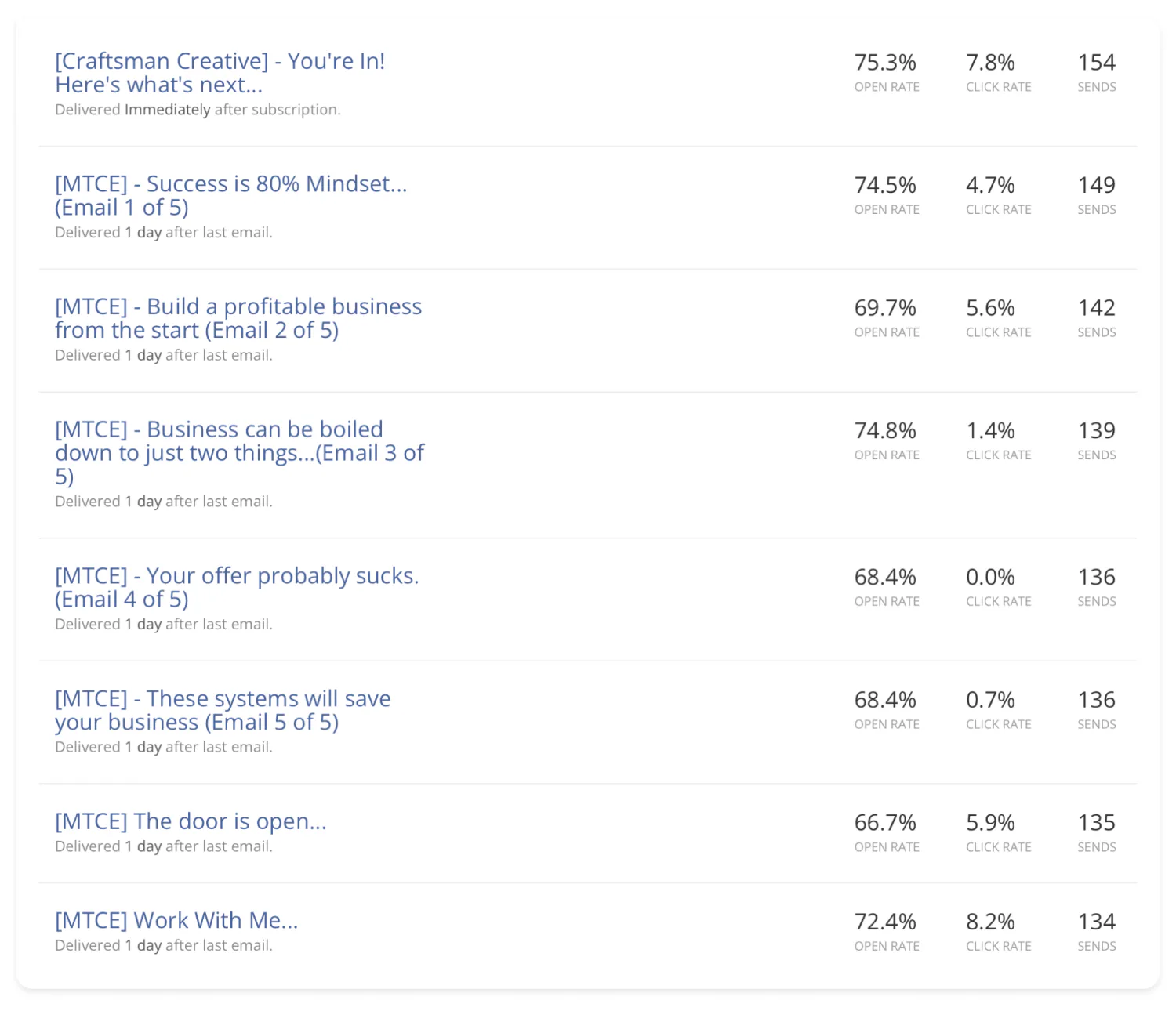
At the beginning of the email series, ask people what they’re struggling with. At the end, open the door to the rest of your world (more free and paid offers and services).
Here’s a handy flow formula that you can return to:
Landing page > lead magnet > week-long welcome series > open the door
Pro tip: Get a head start setting up a welcome sequence for your audience with one of Kit’s pre-built automation templates.
Get the Welcome Sequence template
3. Conversion
The context that people have when they reach a sales page is more important than the words on the page or the offer itself. Remember that.
Once you’ve opened the door, make it clear and simple for people to become customers. Use the tension you’ve created to pull them into your paid products and services.
Here are the stats I can see in my Kit dashboard from my main email form, as an example of what’s possible when you nail that tension and the right audience:
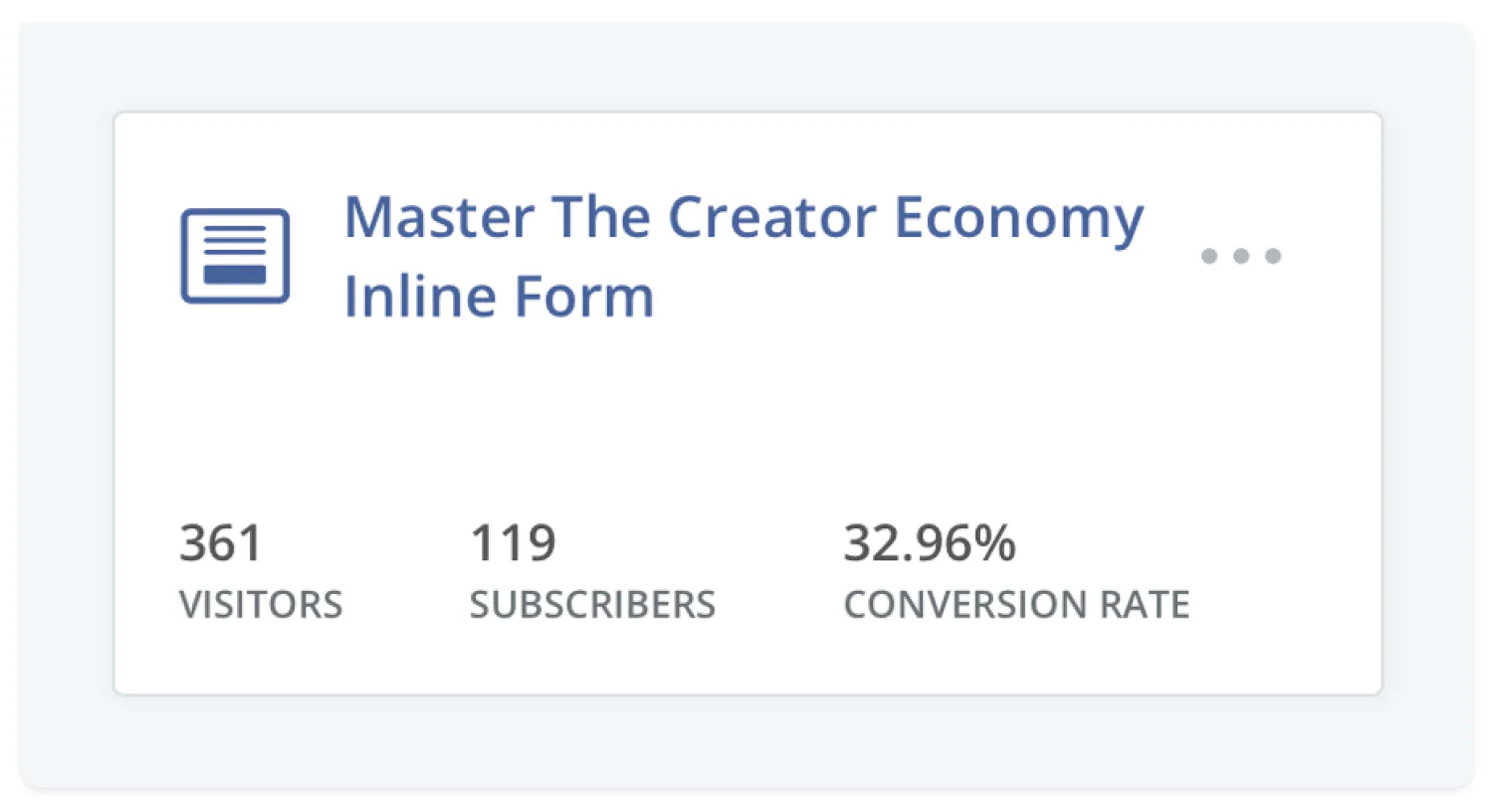
Want to then increase your sales by ten-fold? Create more tension.
Create no-brainer offers based on your knowledge of what your audience wants and desires. Make it easy for them to say yes.
Diversify, diversity, diversify
By focusing on awareness, engagement, and conversion you’ll find you steadily grow a base of consistent, loyal customers. Instead of spraying your message (and products) to a wide group with very little guarantee of return, you’ve positioned yourself for connection and repeat customers. The last step is to give even more value to your true fans by diversifying what you can offer them.
I’m a true fan of Tiny Little Businesses. I’ve bought every single course they’ve created.
I’m a true fan of Derek Sivers. I’ve bought every one of his books, most of them paying extra to have them signed.
I’m a true fan of Tony Robbins. I’ve been to multiple events, purchased all of his books and courses, and I’m a coaching client.
My point is that your true fans buy everything you create. Think about your favorite author or musician. You don’t delay in running out to get their new work when it drops, do you? The goal is to create the same devotion in your fans. The more you give to them, the more they’ll return the favor by bringing value to you in the form of continued repeat support and purchases.
It’s much easier to sell to a true fan than a new lead because of context. If you’ve continually created more value than anyone else, your fans will trust that the next thing you offer them will also be valuable.
Here’s an example of how context and diversification can support increased profits. Once people get through my week-long welcome series, they get my weekly newsletter, which ends with this content snippet:
PS – Craftsman Creative is a “choose your own adventure” type deal, so there are a few paths you can take from here:
1. Check out the different topics on the blog and head down a rabbit hole of what you need most in your business right now.
2. Learn how to build a six-figure creative business with my book, Craftsman Creative
3. Grab my email course on how to build a six-figure business in a matter of months, not years
4. Join the Society of Independent Creators, a new online community for supporting, teaching, and even investing in each other’s creative projects.
(Thanks to Justin Welsh for the inspiration)
Pro tip: What’s great about content snippets in Kit is that you can write them once and use them over and over again. They’re perfect for repeatable items each week, or you could even add them to your template so that they show up without needing to add them each week. Find out how to set up content snippets in your account for easy access to your most used content.
Breaking down the above offers, we see it provides a ton of value for free (blog and newsletter archives), while also offering a variety of products and services:
- Book = $20-35
- Email course = $150
- Society Membership = $199/year
Even further down the line, depending on the needs and desires of the reader, I also open the door to:
- Strategy Calls = $1,000/call
- Creator Coaching = $1,000/month
- Business Consulting = $1,000/week
With a small base of loyal fans and this many products and services, it doesn’t take much to reach $10,000 per month in revenue. Scaling also becomes easy once you have the product infrastructure and context in place, it’s just a numbers game. The more awareness and engagement, the more conversion.
This doesn’t include the revenue I get as the owner of Craftsman Creative and from producing feature films, which are high-ticket offers for a much more specific group of people (course creators and film investors).
It’s time to take action
You have enough just from this post alone to go out and build a six-figure creative business using the tools you already have ( Kit) and a few simple offers.
That’s great and all, but what do you do now?
I’ll tell you what you don’t need: more information. It’s not about more info. It’s about more action.
Take Derek Sivers’ advice when it comes to getting what you want: “call the destination and ask for directions.”
I’ve been there, and I’d love to help you turn information and knowledge into action. You can reach out any time—daren@craftsmancreative.co or come say “Hi” on X/Twitter.


